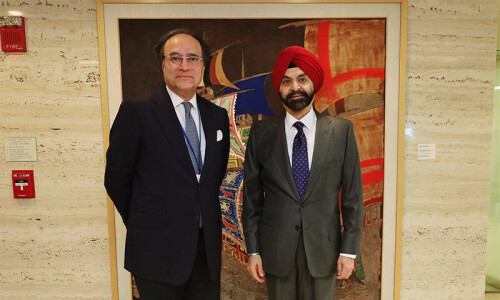The purpose of this article is not to gauge the precise misalignment in the exchange rate. Instead the objective is to make the exchange rate theory more digestible.
To begin with, it is the key price that links an economy with the global market. It’s important for two reasons. If this price is high, foreign economies find it expensive to do business with us. If it is too low then it becomes expensive for the domestic economy to do business with the rest of the world.
So it is crucial for policymakers to get this price right, especially if the economy is too small to affect world markets.
In theory, this price should be determined by factors affecting demand and supply of the pair of currencies. But putting this principle to practice is a complex process, especially in developing economies where markets are not fully developed. In such economies, the noise or euphoria often adds to the complexity of the process.
It is important to manage the frequency and the size of inevitable depreciation
So how do we know if the price (exchange rate) is overvalued or undervalued in such economies? A quick way of knowing this is to estimate the trend in the real effective exchange rate (REER) and see if the prevailing REER is above or below that trend. Consequently, if the level of the REER is below the trend, the currency can be considered overvalued. The opposite can be said if it’s above the trend for a long time at a stretch.
This approach assumes that the trend represents the potential equilibrium level of the REER. Applying this methodology in the context of Pakistan over 48 months (2014-2018) shows that the rupee was well below its trend between July 2017 and May 2018. This suggests overvaluation.

Note that during this period Pakistan’s current account deficit was an unprecedented $15.9 billion. However, most recent data (Figure 1) indicates the exchange rate is reverting to the equilibrium price beginning the second half of 2017-18. This may be attributed to the three episodes of depreciations in the nominal exchange rate that happened in December 2017 and January and May of this year.
The corresponding adjustment in the REER was 4.02 per cent, 3.42pc and 2.21pc, respectively. These episodes were necessary given the imbalances that were building up in the external sector. Even more recently, on July 31, the rupee appreciated about 3.1pc in the interbank market (as reported by Dawn). However, that euphoria is due to some inflows and sentiments that might fade away eventually.
Repeating the same exercise over a longer horizon (2003-17), however, shows that the exchange rate is closely aligned (Figure 2) with what can loosely be termed an equilibrium level. A simple average method applied over the same period also shows that the REER was aligned.

Managing the exchange rate is a tricky business and requires utmost care. In small open economies like ours, what is most important is effectively managing the frequency and the size of these inevitable depreciations. The longer the REER remains above the trend, the more anxiety it creates, which eventually ends up in big, lumpy depreciations in the nominal exchange rate. It is, therefore, essential to reduce the length of the cycle through timely policy measures to keep the volatility in check within the broader confines of the principles of economic theory.
Doing so successfully does not only clear the air of uncertainty in the markets but is also essential for keeping the external sector in equilibrium at least in the short run. In the long run, however, equilibrium is achieved by enhancing the productive capacity of the economy and nothing else.
The writer is a graduate of Columbia University. He works in the research department of the State Bank of Pakistan. The views expressed are his own.
Published in Dawn, The Business and Finance Weekly, August 6th, 2018














































